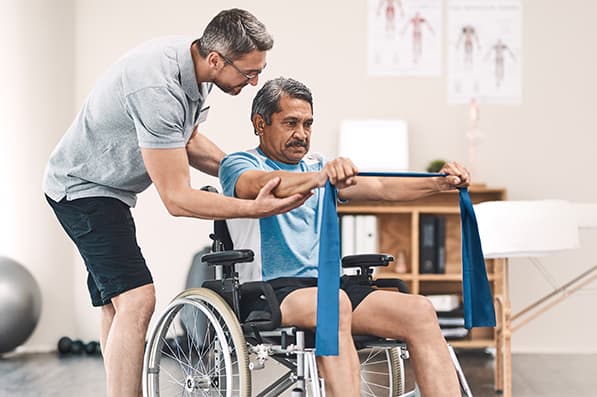
Loading...

Loading...
2025-05-26
Antara
Home-based physiotherapy provides patients with a powerful recovery option after surgery. Studies reveal that patients complete their therapy schedules 30% more often when they receive treatment at home instead of in clinics. Their commitment to the programme is a vital component that leads to better rehabilitation results and long-term recovery.

Most post-operative physiotherapy programmes last 6-9 months and can take place anywhere, but home therapy brings distinct benefits. Patients feel more satisfied and less stressed when treated at home compared to clinical settings.
Starting personalised therapy right after surgery substantially improves recovery outcomes. Patients who begin rehabilitation early show better functional improvement, less pain, and increased mobility. The familiar surroundings of the home create a supportive environment that helps reduce stress and anxiety throughout recovery.
This blog examines how home-based physiotherapy enhances post-surgical recovery and its advantages to patients who want effective rehabilitation in a comfortable setting they know well.
Rehabilitation after surgery requires careful attention. Physiotherapy is a vital component of this process. Studies show that home-based physiotherapy services help patients become more independent. They teach self-management and strengthen patient confidence. Consistent monitoring from doctors will ensure better continuity of care and higher patient satisfaction.
Home physiotherapy removes the stress of travelling to clinics. This benefit matters most to people with mobility issues. Patients find home-based services convenient and less disruptive to their daily lives. Treatment in a familiar environment reduces anxiety and increases comfort during sessions. Research shows that home-based rehabilitation after surgery achieves recovery rates similar to traditional in-clinic care.
Home physiotherapy benefits many surgical procedures, including:
Physiotherapists create tailored rehabilitation plans after a detailed assessment. This personalised approach promotes better engagement and motivation throughout recovery. The home services have:
Home physiotherapy enables patients to learn self-management techniques in their comfort zone. Professional care combined with psychological comfort creates an ideal healing environment. Recovery after surgery can be challenging. However, in-home physiotherapy provides a practical solution for both physical and emotional needs. This approach offers the best path to independence and function, especially for patients with limited mobility after orthopaedic, neurological, cardiac, or abdominal surgeries.
Family involvement can improve post-surgery outcomes by preventing complications related to simple care. Studies show that when families actively participate, patients walk more each day. Family members learn to help with exercises, track progress, and make sure patients follow recommended treatment plans.
Effective physiotherapy can be seen in better mobility, strength, and balance. Patients show improved adherence to simple care activities like breathing exercises, oral hygiene, and cognitive activities. Less pain and reduced swelling also indicate successful home-based treatment.
In-home physiotherapy services make post-surgical recovery much easier to manage. Research shows patients follow their treatment plans 30% more when therapy takes place at home instead of in clinical settings. This level of commitment is vital to achieve the best recovery results. Home-based care reduces stress levels and increases patient satisfaction throughout the recovery process. The comfort of familiar surroundings also lowers the chances of healthcare-related infections.
Starting physiotherapy right after surgery is the cornerstone of successful rehabilitation. Patients who begin therapy early show better improvements in mobility, strength and pain management. Therapists can create plans that perfectly match each patient's living space and daily schedule. Family members become key partners in recovery and help patients exercise more consistently.
A qualified physiotherapist visits patients' homes to deliver customised rehabilitation services after surgery. The treatment happens in familiar surroundings and consists of assessment, treatment, and ongoing support. Your physiotherapist brings the needed equipment and creates treatment plans based on your recovery needs.
Home-based physiotherapy works just as well as clinic-based treatment for many post-surgical conditions. Studies show that home-based rehabilitation delivers outcomes comparable to traditional outpatient physiotherapy, with no significant differences in recovery results. You get extra benefits from home care without compromising results.
The results come from:
Your therapist will bring or recommend simple items for in-home physiotherapy. The tools you need depend on your surgery type and rehabilitation goals.
Common equipment has:
Your surgery type, health condition, and doctor's advice determine when to start. Most patients can begin home physiotherapy right after hospital discharge. Knee replacement patients usually start within 2-7 days after surgery. The first sessions focus on gentle movements and pain management.
Home physiotherapy helps people who struggle to reach outpatient facilities. Elderly patients, people with limited mobility, and those recovering from complex surgeries like joint replacements see the most benefit.
The best candidates are:

Please fill in the form and submit the details to request an appointment.